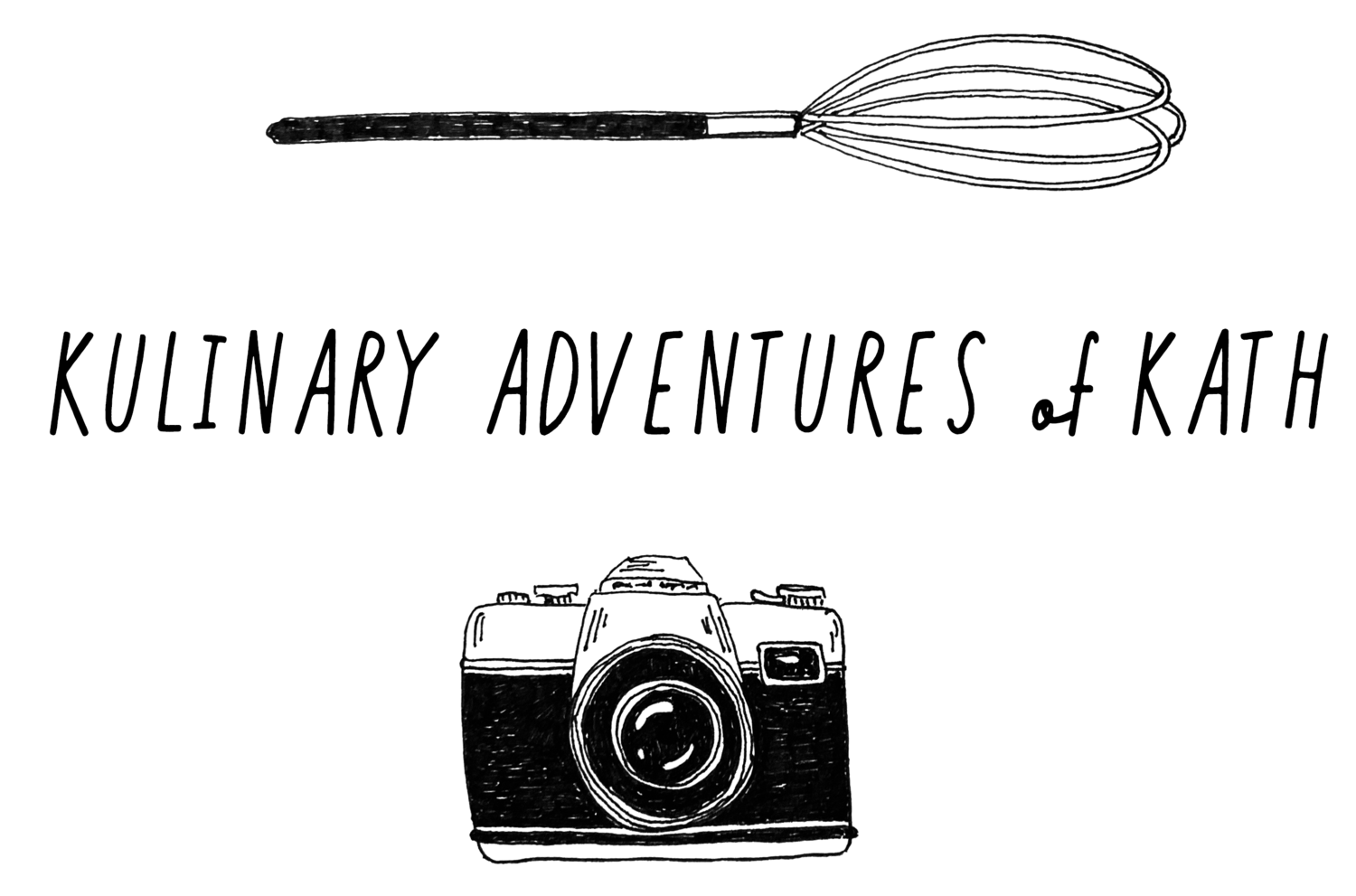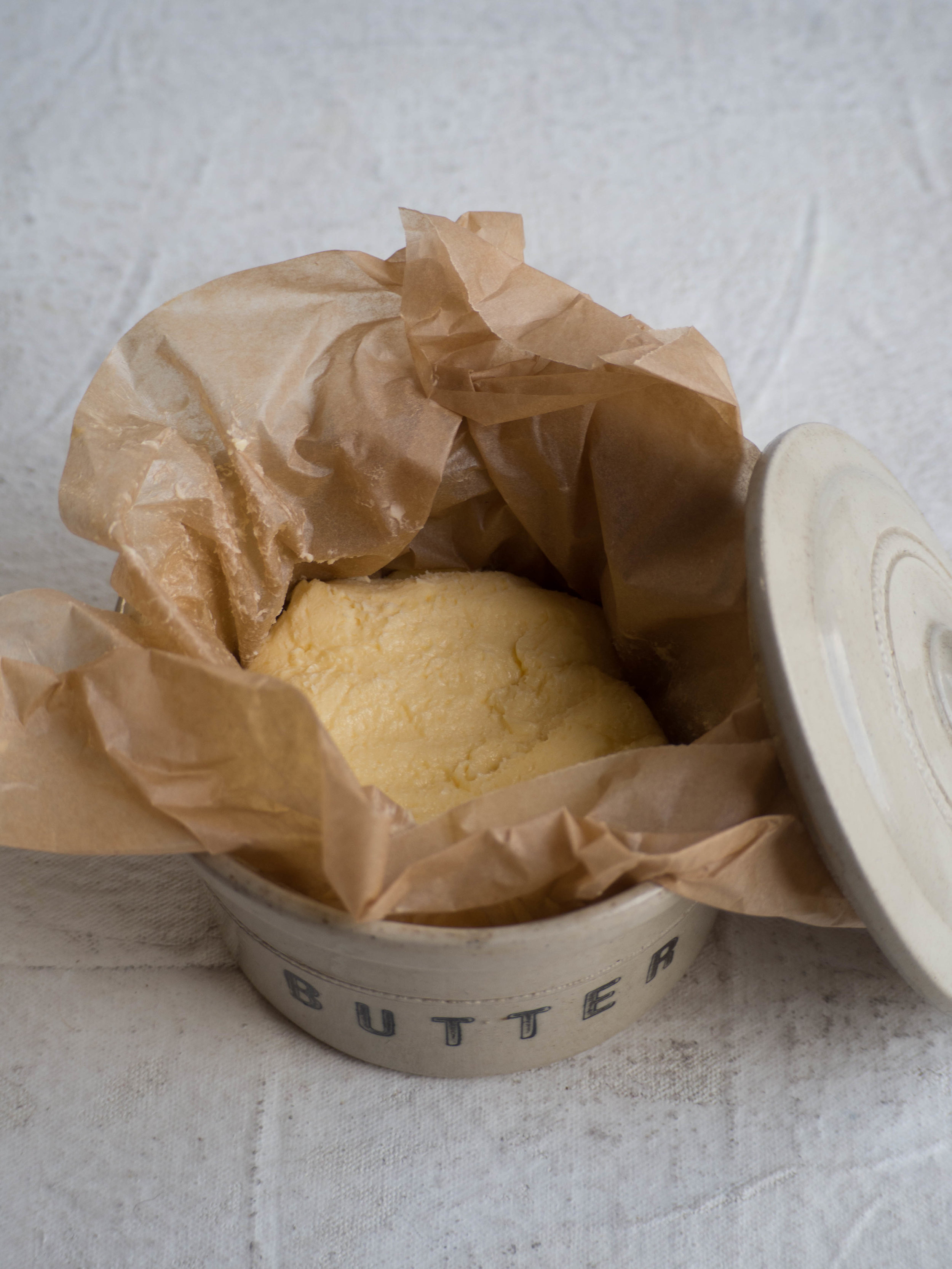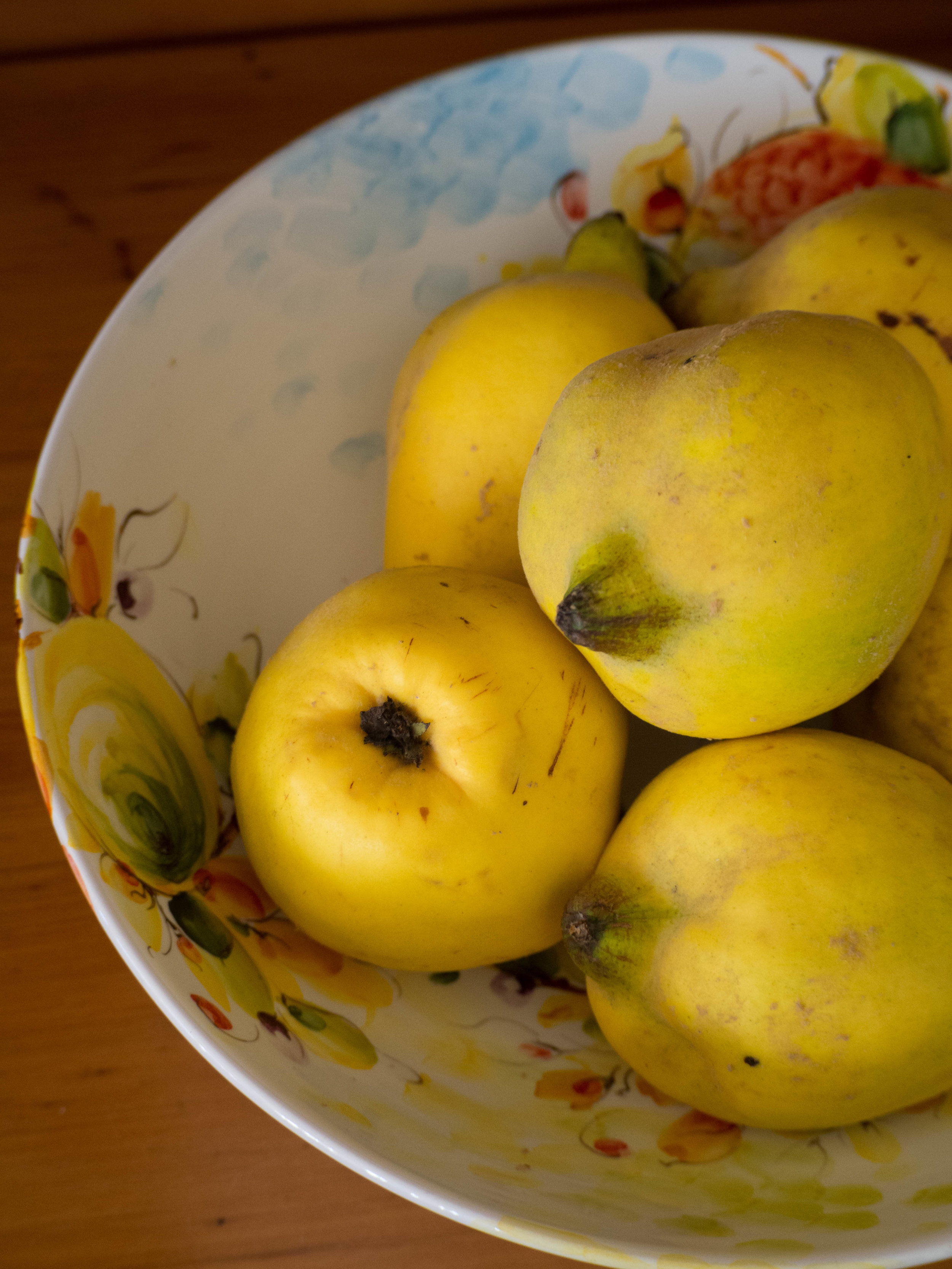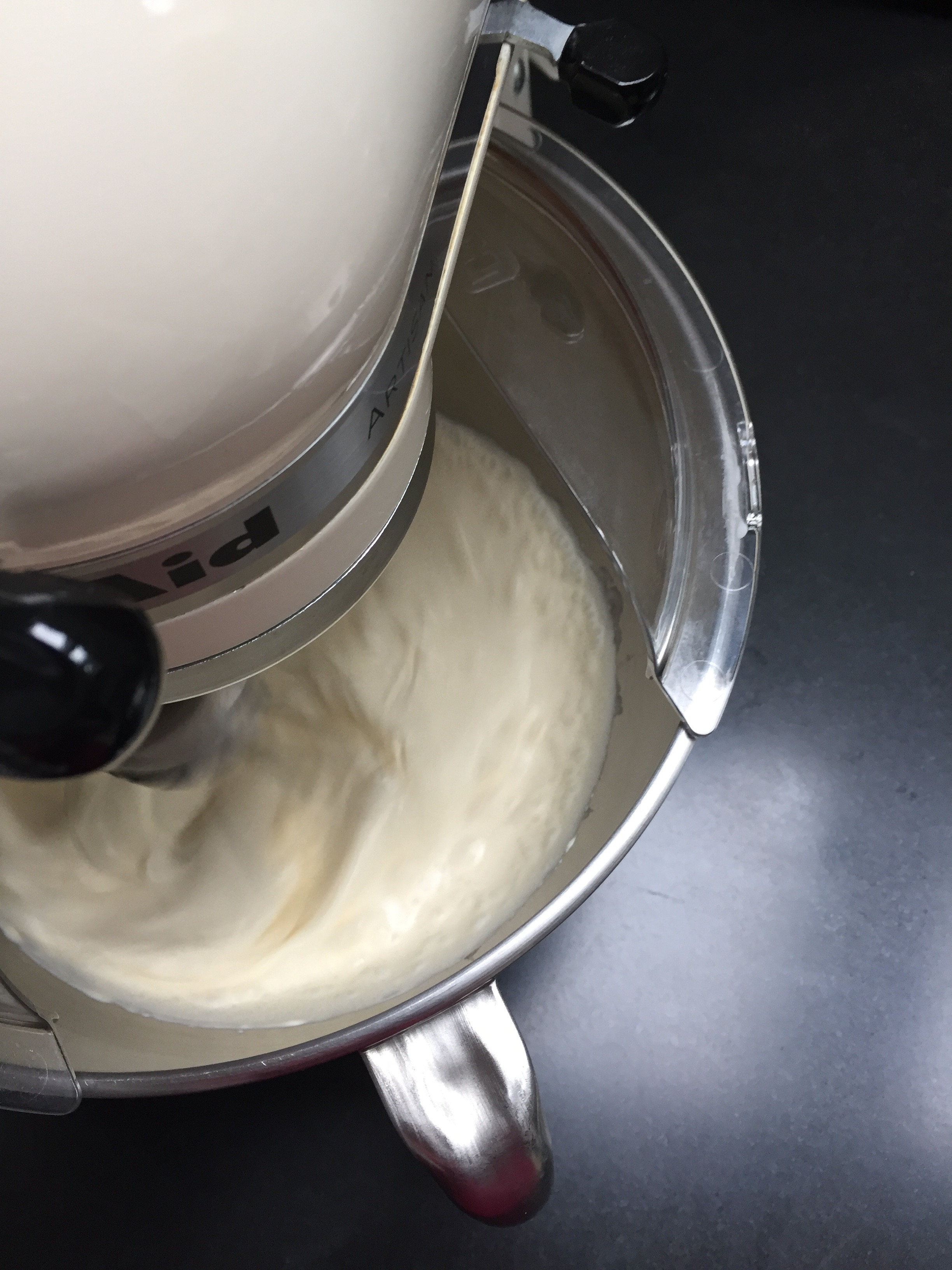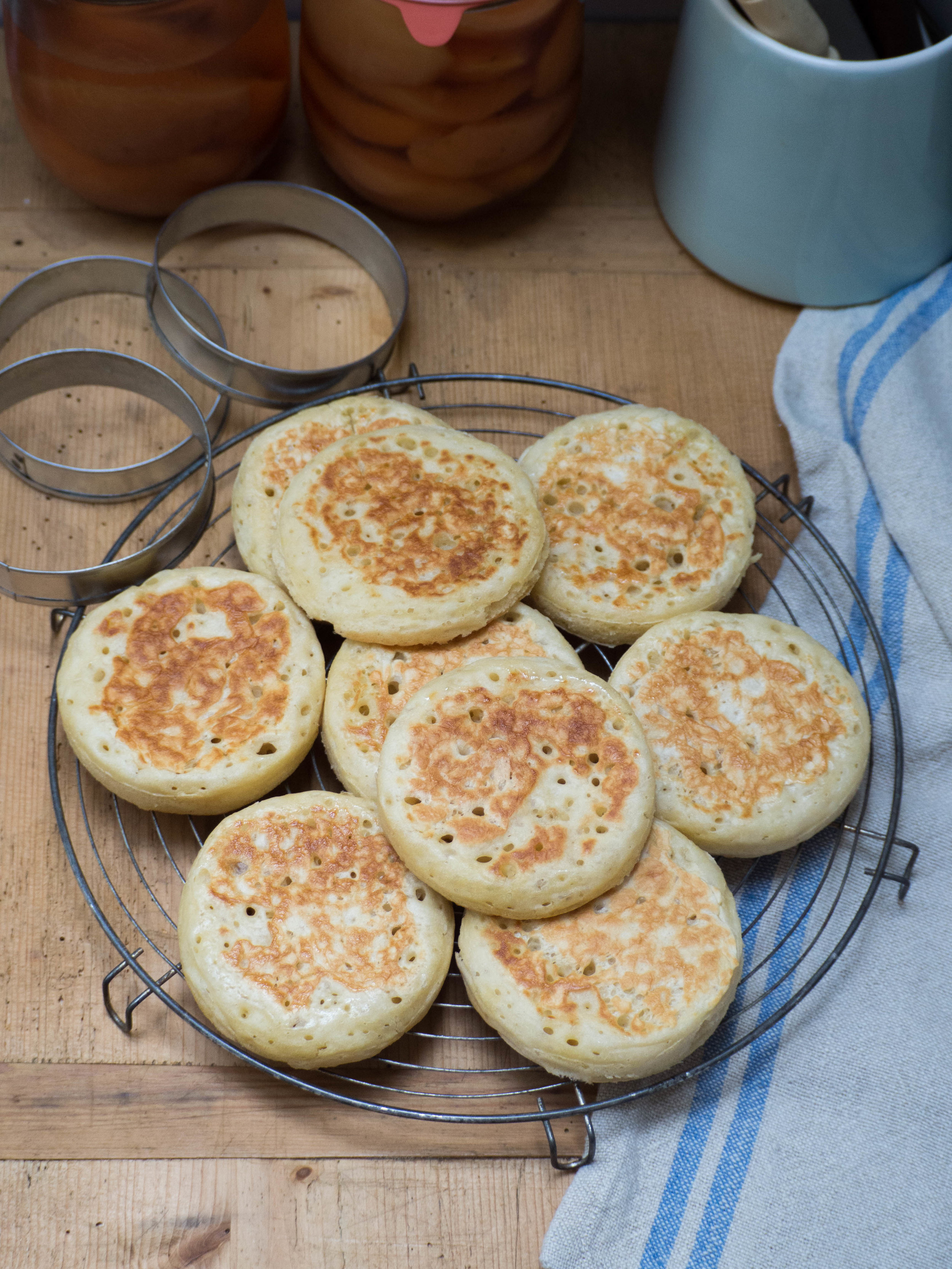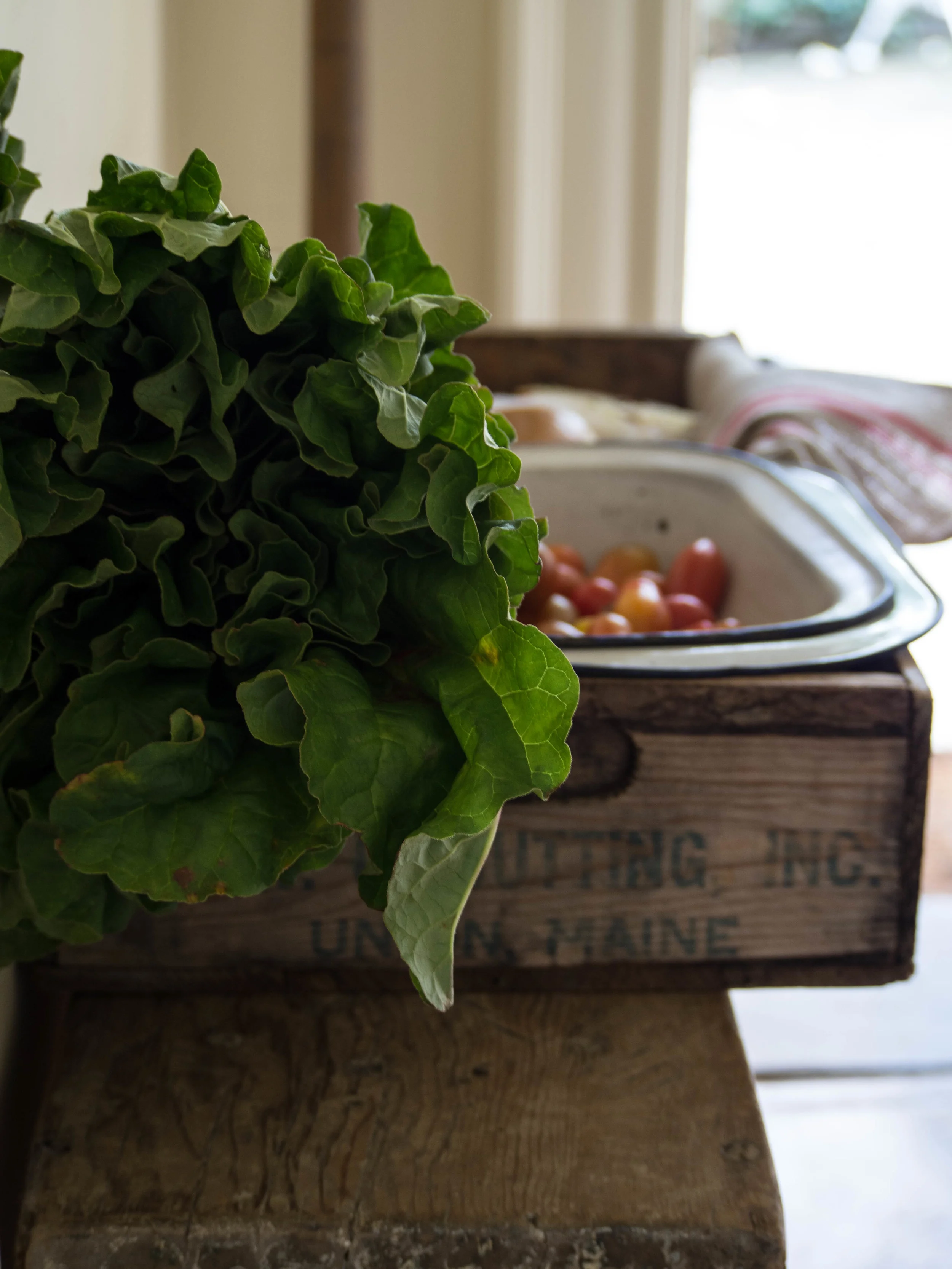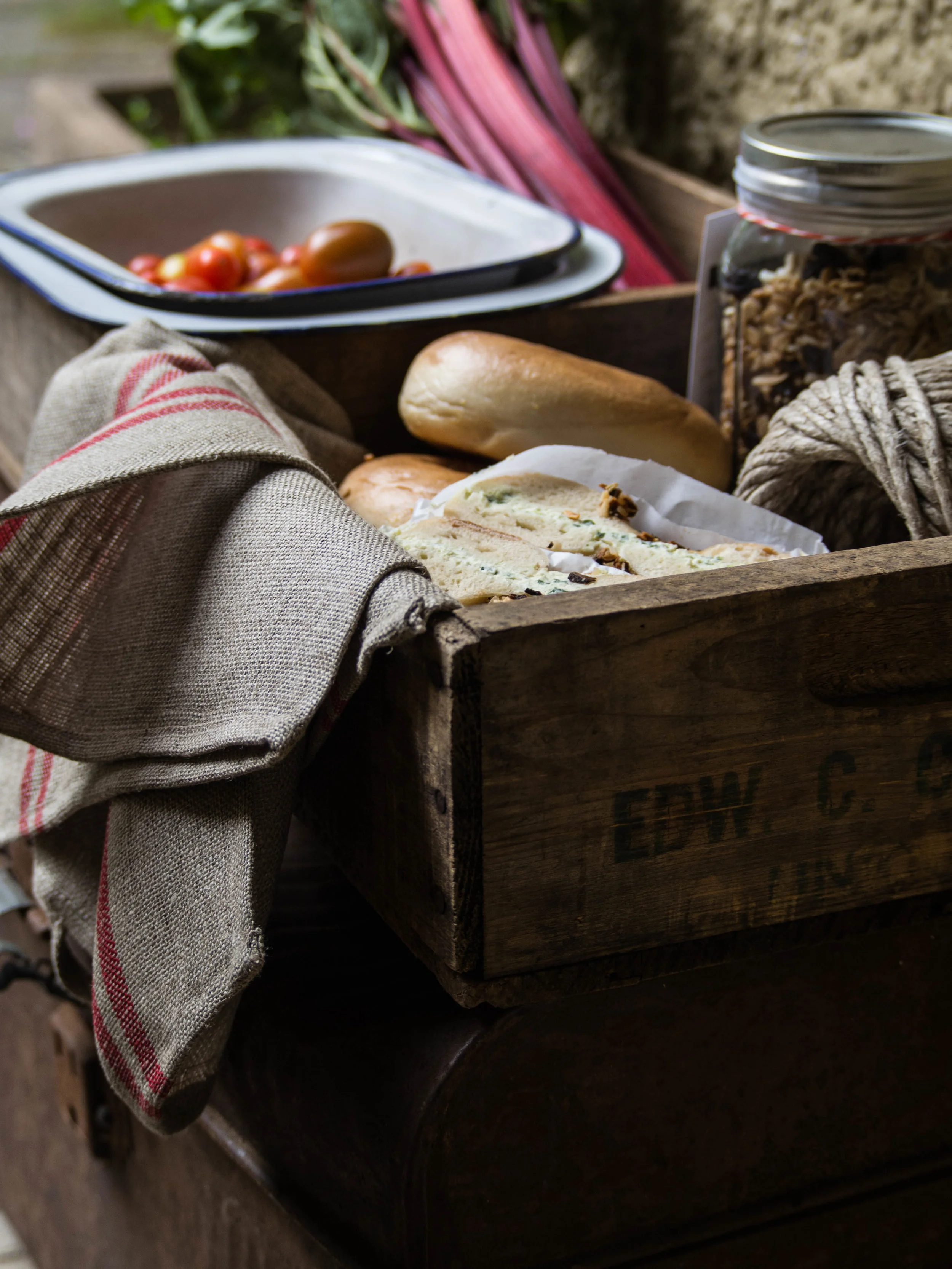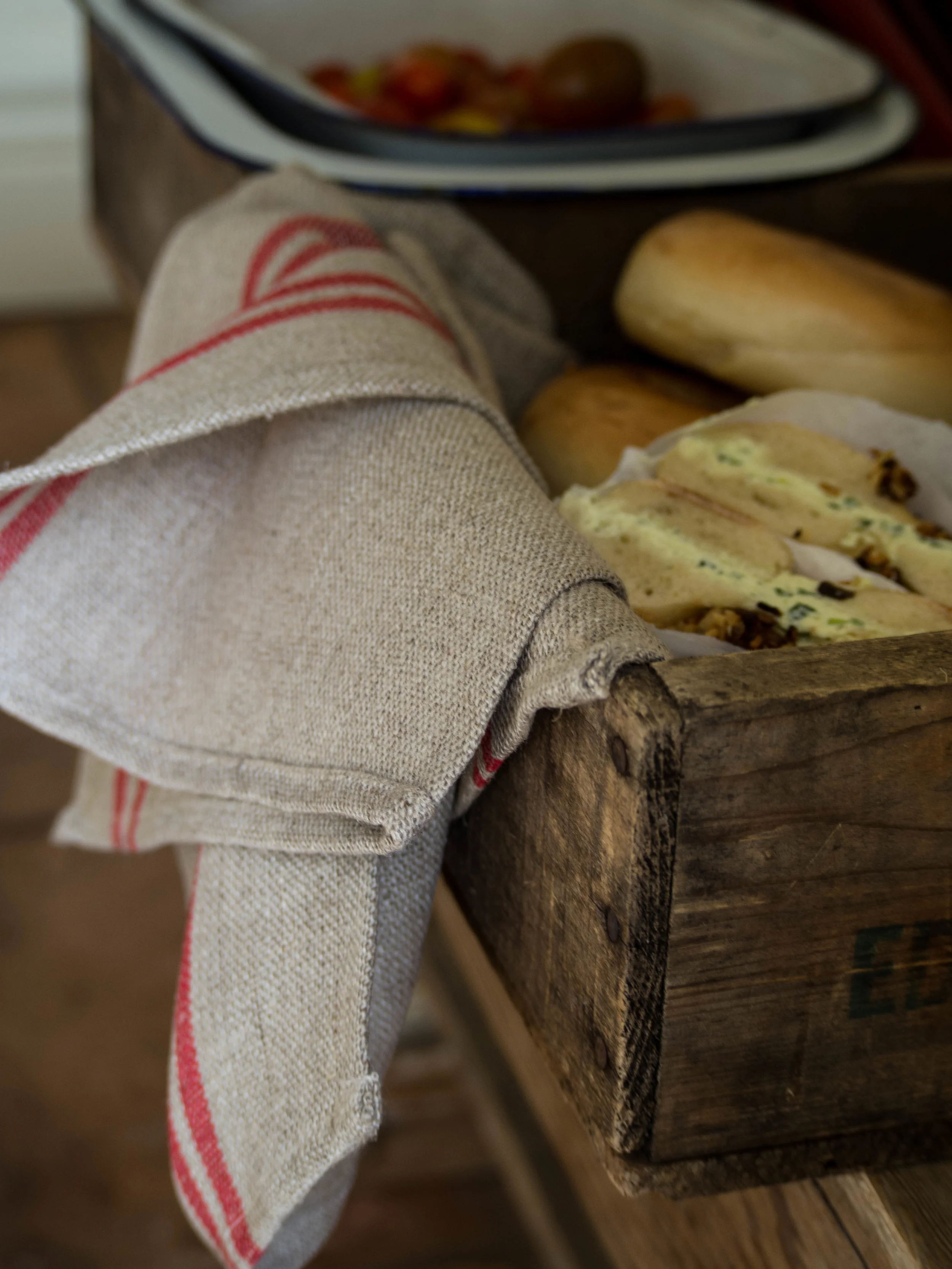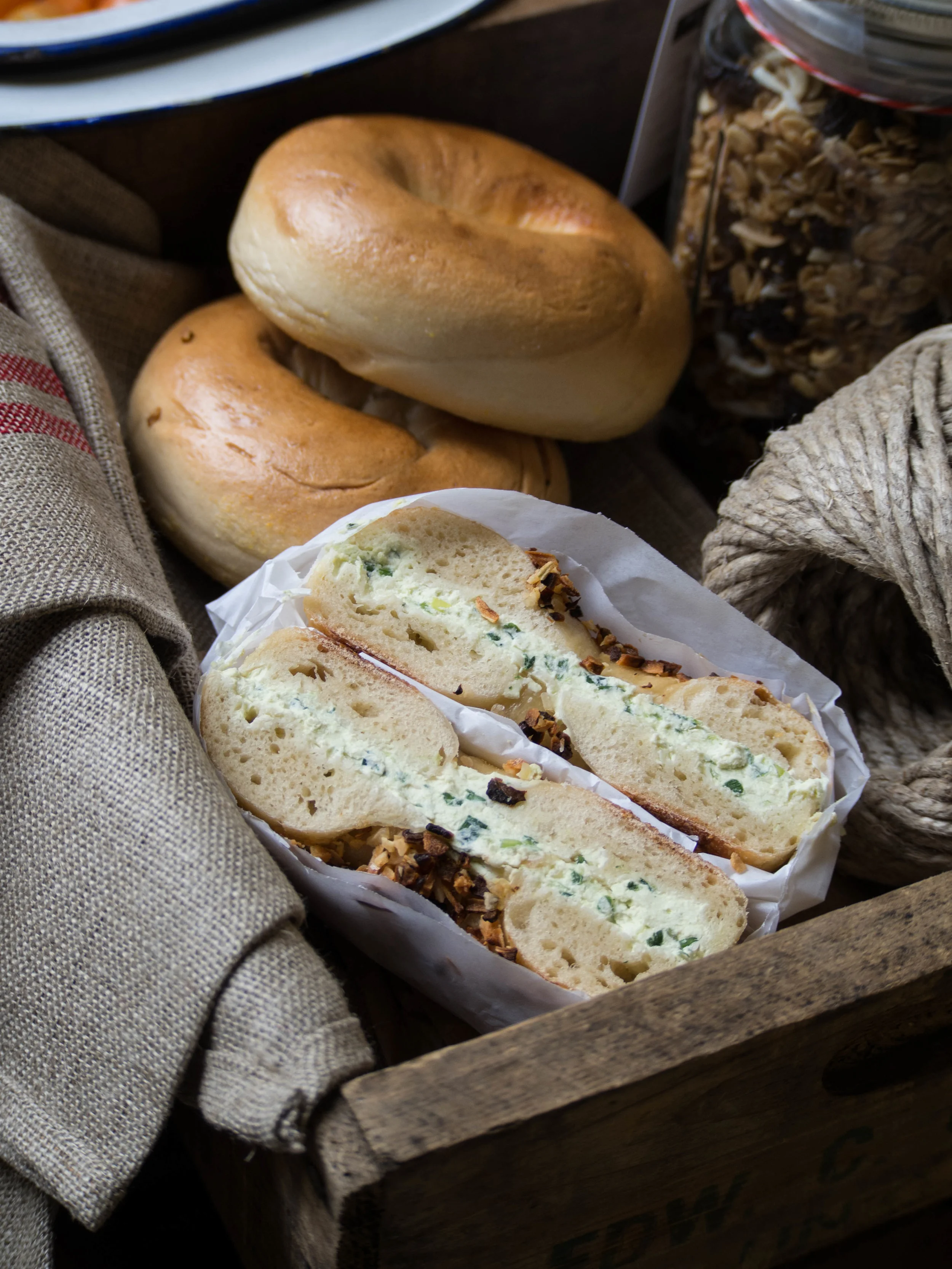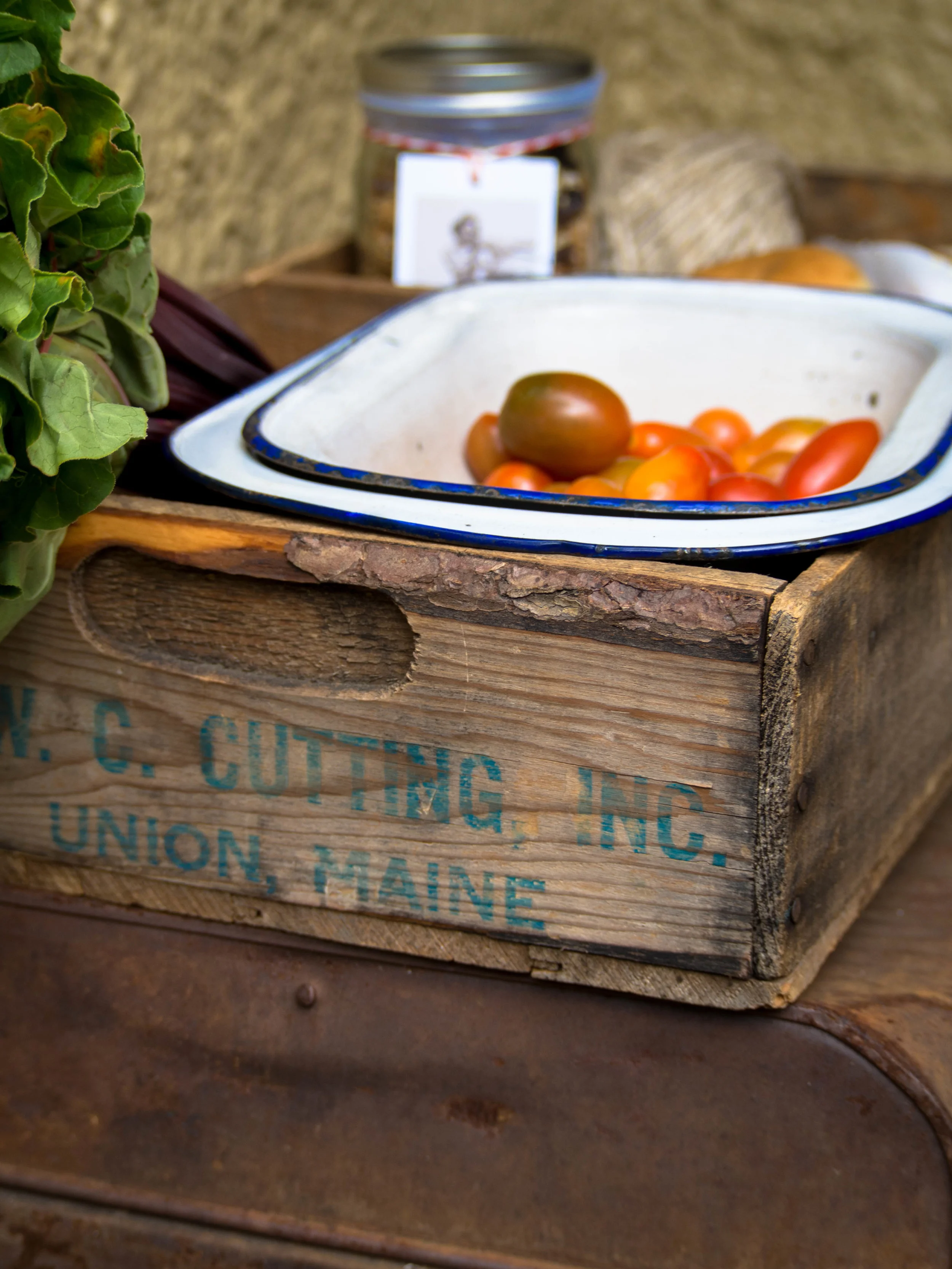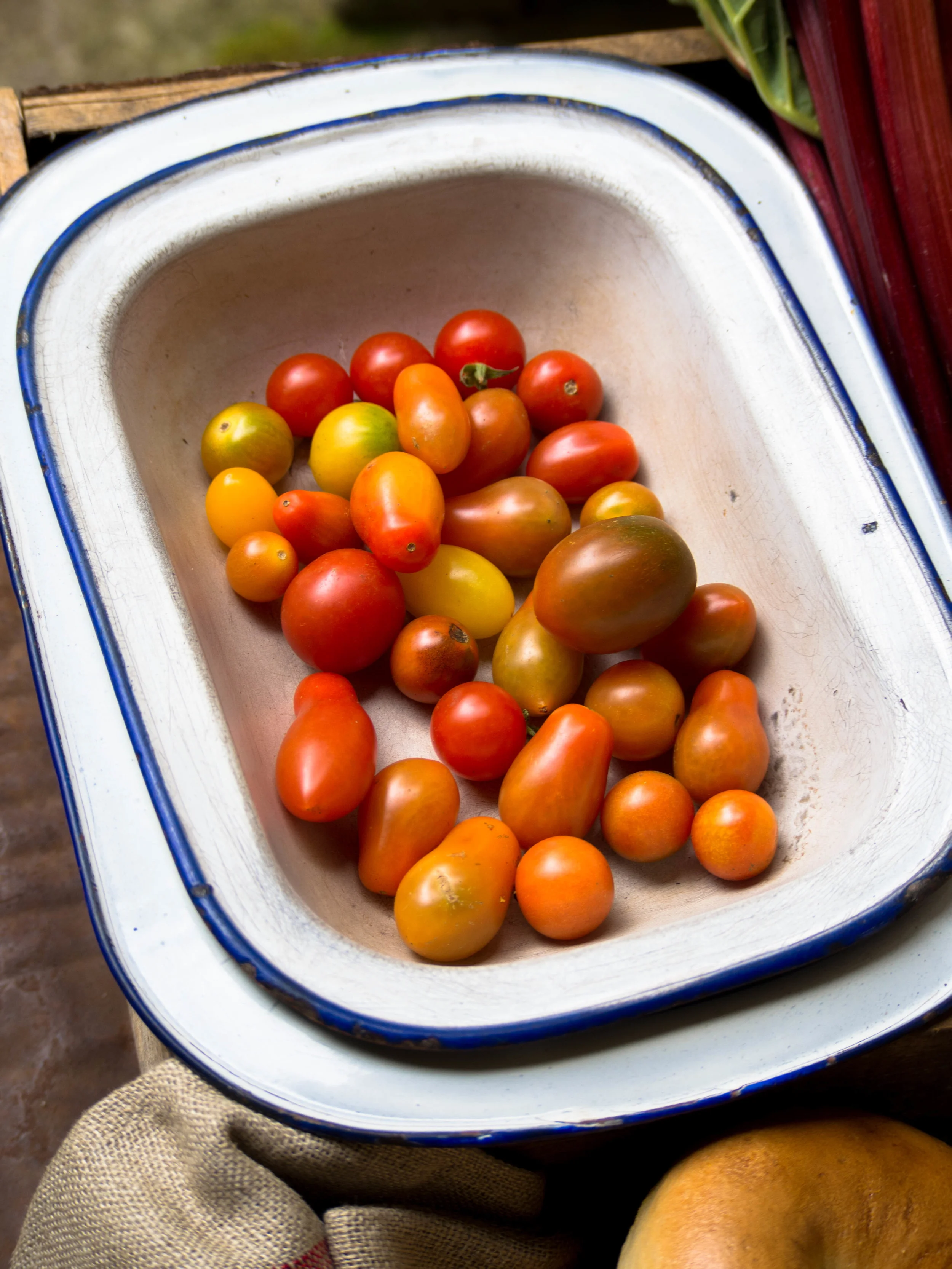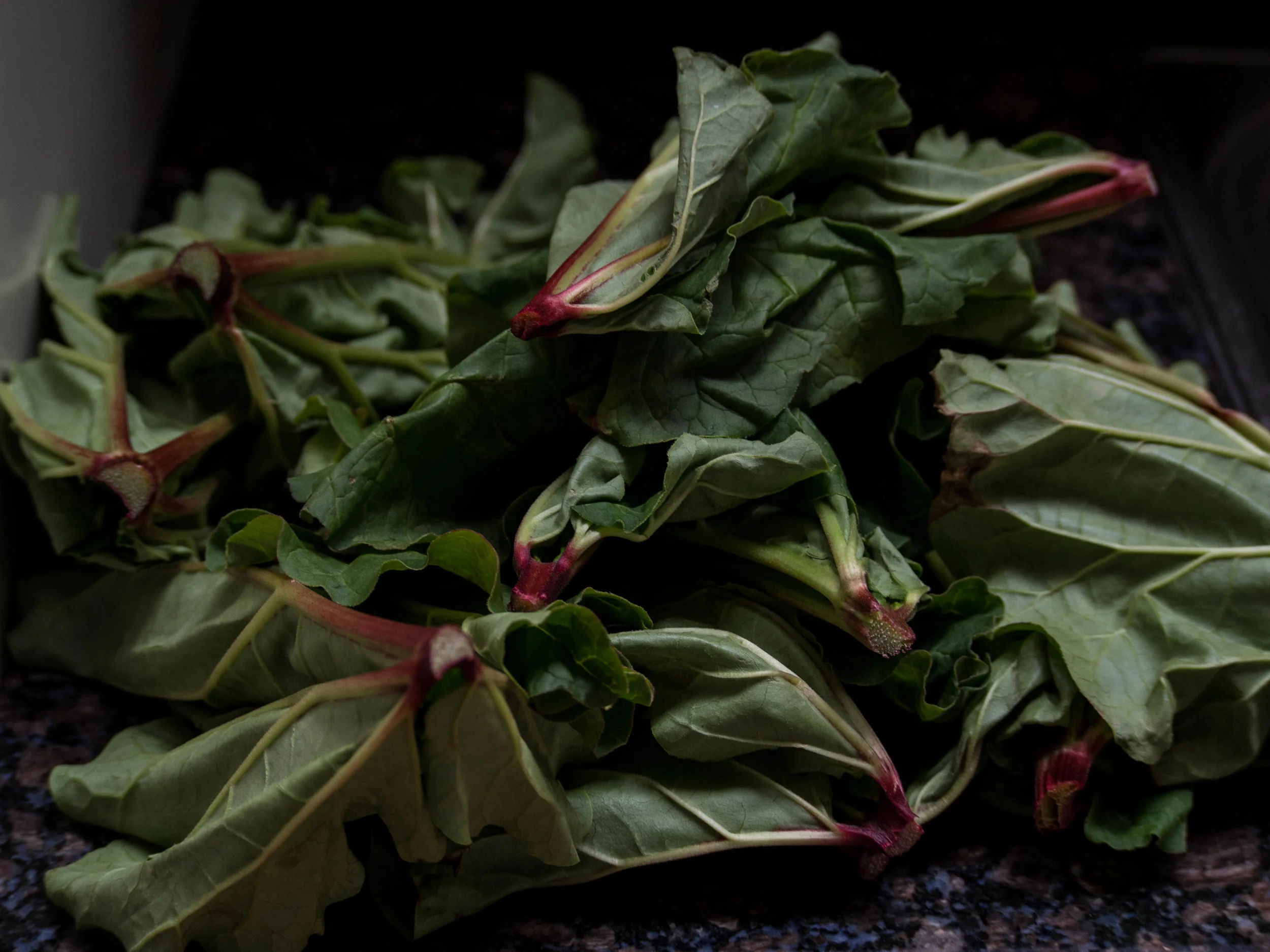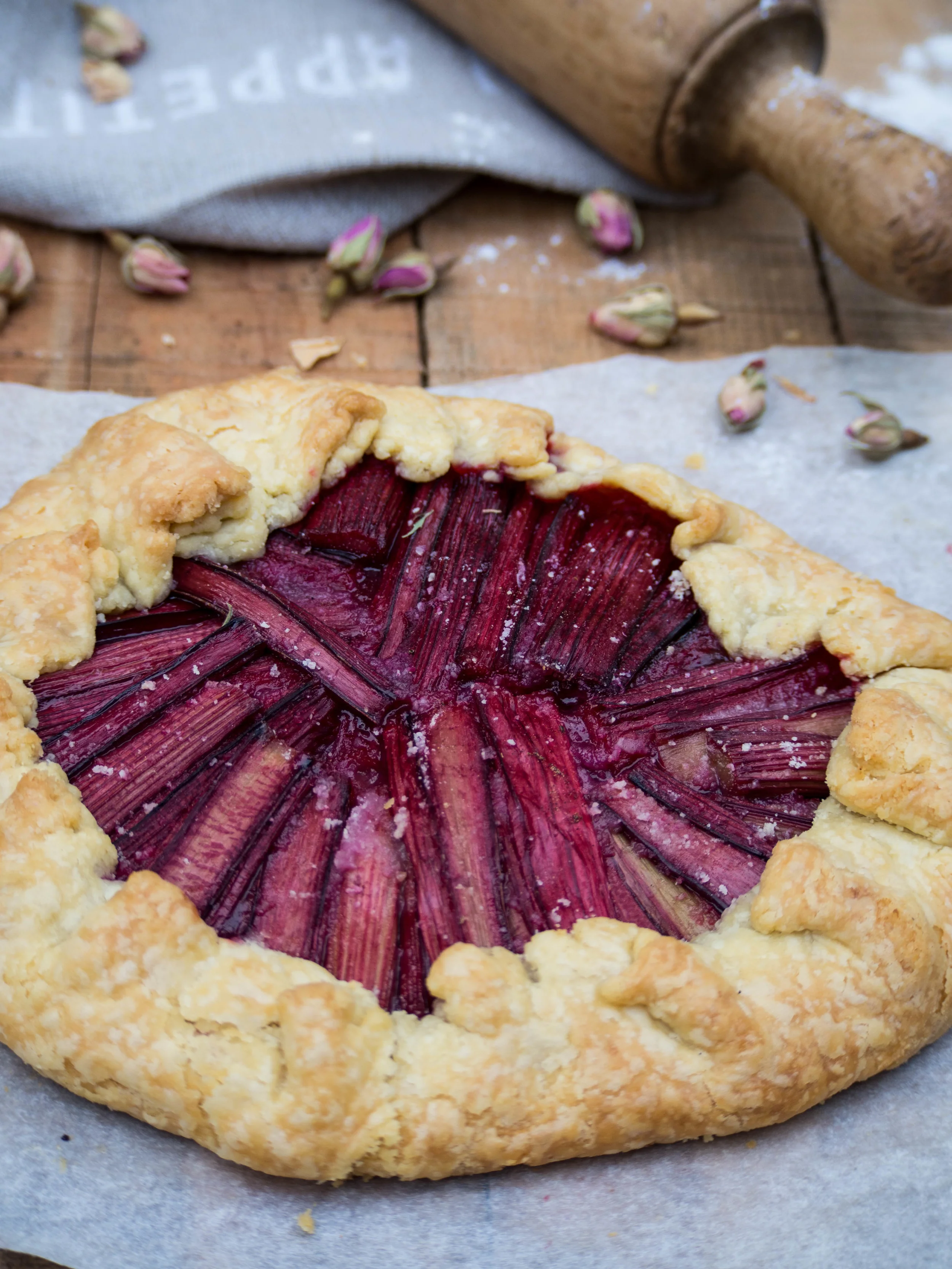I was inspired to make crumpets again after having an amazing breakfast at Synonymous Cafe in Medlow Bath while I was away a few weeks ago. The crumpets we had there were really good, and the combination of accompaniments got me thinking that I should be serving crumpets at home with more than just butter/margarine and vegemite. Keeping with the travel inspiration theme, I decided to pair my crumpets with quince I had poached after buying some from the Agrestic Grocer in Orange while we were away, and amazing cream from Dubbo based Little Big Dairy Co whose milk we enjoyed at a few cafes in the Central West.
I also Little Big Dairy Co's pouring cream to make the butter as well, and the resulting buttermilk can be used for this recipe also - just top up the quantity with another milk if you don’t get quite enough. I did this the second time I made these, and used Little Big Dairy Co’s unhomogenised full cream milk, which I think is the nicest milk I’ve ever tasted. The first time I made these I used Pepe Saya’s Buttermilk, which is a by product of the butter making process. As you can see I really like supporting great Australian small businesses, and buying local when possible. I love to support people who are passionate about food, and make a top quality product like Pepe Saya and Little Big Dairy Co. And I have to say it’s so worth it when you cook with products from these small producers and the taste is so much better than you’ve had before.
Do you ever find cooking inspiration on holidays? And what are your favourite small food businesses and producers you love to support? Let me know in the comments below, I’d love to add to more to my list!
Homemade Butter
This is well worth the effort, and in fact it’s not really that much effort. All you need is a stand mixer, whisk attachment, muslin and some pouring cream. Use the best quality cream you can find, as it will produce a nicer quality butter and buttermilk. Both the butter and buttermilk can be used straight away for frozen or another time, so no need to stress about using a whole litre of cream, it won’t go to waste. You can however use any quantity of cream, as long as it is enough for the mixer to process.
Ingredients:
1L good quality pouring cream
Method:
Pour the cream into the bowl of a stand mixture fitted with the whisk attachment. Start mixing on medium-high speed, covering the bowl with a tea towel if the cream is jumping out and making a mess. After a couple of minutes of constant mixing, the cream will thicken and become whipped. Continue mixing for a few more minutes (at least 5), and the cream will start to turn a yellow colour. In the next few minutes the butter will begin to separate from the buttermilk - you might want to cover the bowl with a tea towel again as I find the buttermilk jumps out of the bowl quite a lot. Continue mixing for a few more minutes, or until the butter and the buttermilk have completely separated.
Place a large colander over a bowl, and line the colander with the muslin. Pour the butter and buttermilk over the colander, then squeeze out the butter over the colander using the muslin to release more of the buttermilk. The buttermilk can be used in the below recipe, kept in the fridge for a week or frozen for later use.
Rinse the butter in cold water, then knead on a dry surface to release more of the buttermilk. This process is essential to give the butter a longer shelf life as, if too much buttermilk remains the butter will go off. Rinse the butter again and knead until most of the buttermilk as been released. Roll the butter into a log or shape into a disc and wrap with baking paper and seal. Use for the below recipe and store in the fridge (it should keep for a couple of months), or weigh it out into portions and freeze.
Buttermilk Crumpets
This was my second recent attempt at making crumpets from scratch. I have posted a recipe for crumpets before, but have since found a new recipe I like better and have worked out the best way to cook them. They key is to cook them low and slow, so you give the tops time to bubble and burst, giving that distinctive hole-y top crumpet look, without over cooking the bottoms. You will need crumpet rings for this recipe but you can use egg rings, which will give a smaller fatter or larger thinner crumpet depending on their size. I had been searching for crumpet rings all over for a few years, and finally found some at the Lost & Found Department where they had sourced crumpet rings and handmade cake tins etc from a supplier in Tasmania (if my recollection of the story is correct).
As I mentioned above, I used buttermilk from the butter making process for this recipe. If you can’t get any or aren’t making the homemade butter, just substitute with regular or skim milk. Don’t substitute with cultured buttermilk (the thicker variety found in supermarkets), I’m not sure the thickness of it will work well with this recipe.
Ingredients
275ml buttermilk (not cultured)
55ml water
1tsp caster sugar
250g strong white flour (bread flour)
8g dried fast action yeast
1/2 tsp bicarb soda
50ml warm water
butter for cooking, and to serve
poached quinces, to serve (optional)
thick/clotted/dollop cream, to serve (optional)
Method:
Warm the milk and water (55ml) in a saucepan over low heat, then add the sugar and stir. Don’t overheat the milk. Place the flour into a large bowl and stir in the yeast. Pour in the warmed milk mixture and mix together until smooth. Cover the bowl with plastic wrap and leave in a warm place to rise. The batter will be ready when it has risen and become frothy and full of bubbles, this should take around hour, but leave for longer if the batter hasn’t become very bubbly after an hour.
When the batter is ready, mix the bicarb soda with water (50ml) then mix into the batter until smooth.
Grease the insides of the crumpet rings with butter, and heat a large flat plan on low heat. Grease the pan with some butter and place the rings on to the pan (how many you use at one time will depend on how large your pan is).
Fill the crumpet rings with batter, until the surface of the ring on the pan is fully covered and the batter comes up around a quarter to half way up the crumpet ring (this will depend on how big you want your crumpets to be, allowing for them to rise a little).
Cook for about 5 minutes, keeping the pan on low heat, or until bubbles then holes appear on the top of each crumpet. This is a slow process so don’t be tempted to rush it.
Flip the crumpets over once the holes have appeared on the tops, and cook for another couple of minutes or until golden - you can remove the crumpet rings at this point, and allow them to cool a little before re-greasing them to use again. Continue with the remaining batter. I found the batter made about 10 crumpets.
Serve straight from the pan, or warmed up later on under a grill with fresh butter, cream and poached quinces, or any other topping you fancy.
References: ‘Fortnum & Mason The Cookbook’ by Tom Parker Bowles (4th Estate, 2016), p.60; ‘Real Food Projects’ by Kate Walsh (Murdoch Books, 2016) pp.92-3.
